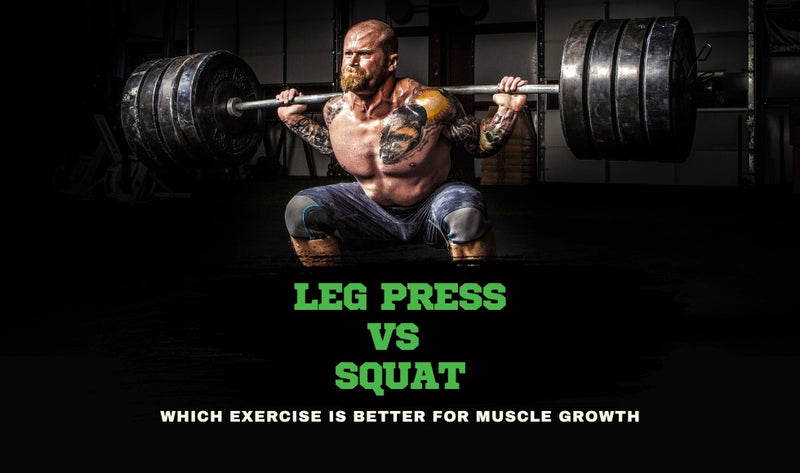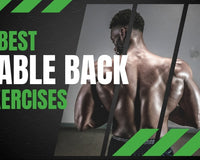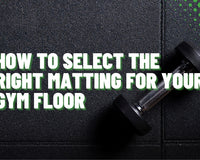If your goal is to build some serious leg muscle, then using the leg press and doing squats are both great ways to do so.
With that being said, the leg press machine and squats are not quite the same.
Doing a leg press involves using a machine with weighted plates or sometimes a built-in weight stack, whereas doing squats can be done using just your body weight or added resistance with something like a barbell or dumbbell.
Although both exercises target your legs, they do have some major differences between them that you should know about.
Today, we’re going to cover everything there is to know about both leg presses and squats, particularly in relation to each other, so you can make an informed decision between the two. Let’s build some serious leg muscle!

What Is a Leg Press?
First, we have the leg press which has its own dedicated machine.
The most common leg press machines will have you seated with your legs and feet raised in the air in front of you, roughly at a 45-degree angle. Your feet push against a wide platform, which is where all of the weights are attached.
The platform, as well as the weighted plates, slide along a solid track to help keep everything in place. The leg press is therefore a guided machine exercise that takes care of the balancing for you.
All you have to worry about is pushing the weight up and controlling it on the way back down. What many people like about the leg press machine is that it is very stable and great to start with, therefore being ideal for beginners.
It’s also pretty easy to lift a whole lot of weight on a leg press machine, which makes many people feel really good about themselves. Generally, people will do between 3 and 5 sets with reps ranging from 8 to 12, depending on the chosen weight training goals.
Related: Leg Machines at the Gym
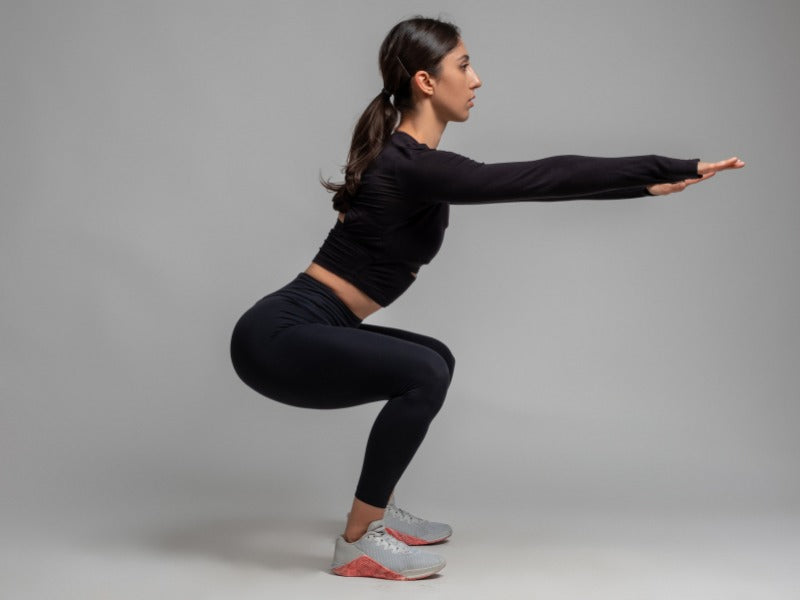
What Is a Squat?
We then have the squat, which is another fantastic leg exercise, albeit different from using a leg press machine. First, with squats, you don’t use any kind of machine.
Here, you stand flat on the ground with your feet firmly planted about hip-width apart (the width can vary slightly depending on what is comfortable for you) and your toes pointing out slightly.
Then with your abs tight, chest held high and shoulders back, you push your hips back and start to bend your knees until your butt is slightly below your knees.
From here, you reverse the previous steps until you are back in the starting squat position.
There are several ways to add extra resistance to a squat but the most common option is to add a barbell to your your back/ shoulders.
For safety reasons, people usually perform barbell squats inside of a rack that can catch the barbell if making it back up for that final rep is not possible.
Some users will also ask someone to be their spotter and help with their squatting efforts.
Related: How Much Does a Barbell Weigh?

Benefits of Leg Presses
Now that we know what both leg presses and squats are, let’s take a look at the benefits of both, starting with leg press benefits.
No Need to Balance
Because the leg press machine operates on a set path, it doesn’t force you to balance as squats do.
Not having to balance makes the leg press machine fairly easy to use, because you just have to focus on lifting the weight, rather than having to focus on lifting and balancing simultaneously.
More Weight
Related to the above point, because there is no need to balance with a leg press machine, it's much easier to lift a lot more weight.
It's not uncommon for someone to be able to lift two or even three times the amount of weight on a leg press machine as when squatting.
Although it might not be more impressive per se, it does feel nice when you can lift that much.
Back Benefits
Leg pressing is good for your legs while also not taking a huge toll on your back. This is unlike some other leg exercises, such as squatting, which can be bad for your back and neck if not performed correctly.
Because you don’t have a barbell resting on your shoulders, and because you aren’t bending in the same way, the leg press machine is much better for your back.

Safety Reasons
Another beneficial aspect of the leg press machine is that it is very safe. These machines come with safety stops, so if you can't lift the weight back up, it won't come down on you and crush you.
Great for Quad Strength
If you are looking to build some big and burly quads, then the leg press machine is certainly the way to go. Through different foot positions, it is possible to target certain areas of your legs with a leg press.
For example, if you have your feet lower and closer together on the footplate, then it will focus the load on your quads even more.
Related: Leg press foot placement guide
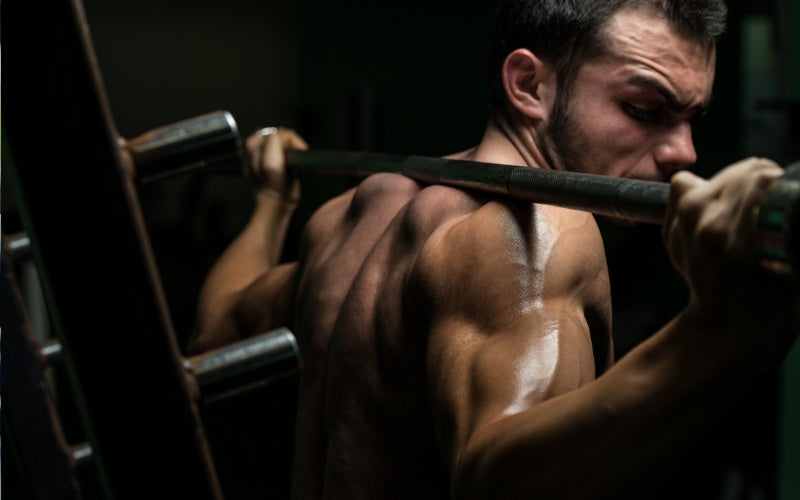
Benefits of Squats
Now that we know what makes leg presses so good, let’s determine why you might want to try squats.
Functionality
Squatting is something you do in your everyday life, so training it in the gym directly relates to how easily you can perform certain tasks in real life. It trains you for real-world activities.
Many Squat Variations to Choose From
What is also great about squats is that there is a lot of variety to choose from. You can squat different amounts of weights, move to different depths, and change up your hand and foot positions to achieve different results.
Great for Stability
Because squatting forces you to balance, it ends up making your core and back much stronger while also training your legs.
Yes, squatting is harder, but it also helps train your balance and stability.
Related: Hip Abduction vs Adduction
Working Muscles
The fact is that squats work a wide variety of muscles in your legs and lower body, almost making it a full-body exercise.
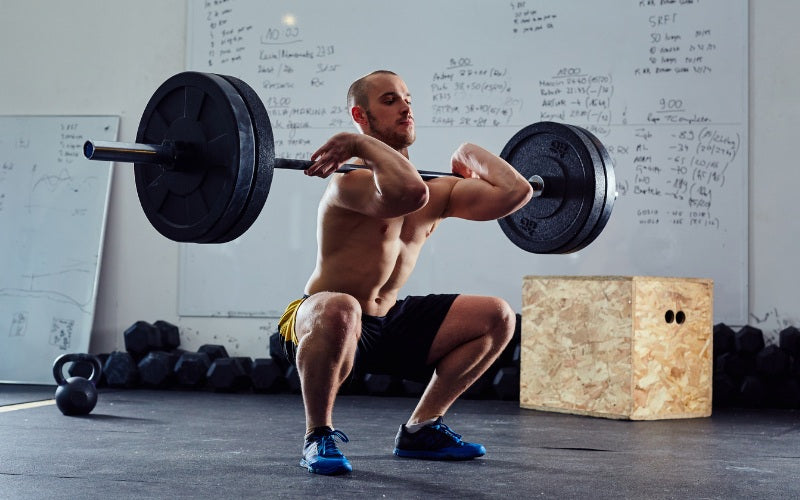
Squats vs Leg Presses: Major Differences
Now that we know all of the basics, let’s determine what makes leg presses and squats different, and therefore which one is best for you.
Muscles Worked
The leg press machine works mostly with the quads and hamstrings, as well as the glutes. Depending on how you do them, you may also work the calves.
However, the squat forces you to balance, and this engages your back and core. The squat works more muscles and therefore has additional benefits on this front.
Related post: Leg press muscles worked full guide
Difficulty
Worth noting is that squatting, due to this being a free exercise as opposed to a controlled machine exercise, is much harder, and it’s more difficult to lift heavier weights as well.
It is very important that you have proper form to perform squats, especially if you are adding extra resistance.
Leg presses are better for beginners whereas squats are better for advanced lifters. Squats are harder, but should also provide you with bigger leg-building benefits.
Versatility
Keep in mind that to do leg presses, you need to have a leg press machine, so you more or less have to do them at a gym.
Squats, however, don’t necessarily need a barbell and can be done anywhere.
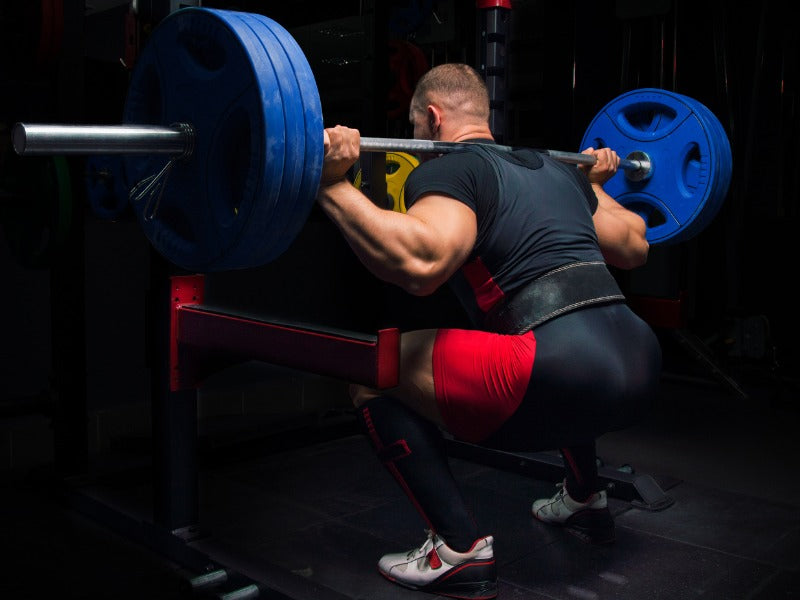
Safety
Also consider that leg press machines have built-in safety mechanisms, whereas squats do not.
Squats, especially if you are lifting heavy, come with a serious risk of injury. This is even more true if you decide to squat without a safety rack or spotter.
Squatting heavily without a rack is dangerous and should be avoided. Squatting is also inherently dangerous for your back if not done right.
Leg Press vs. Squat – Final Thoughts
As you can see, both the leg press and the squat are great exercises, but they have significant differences and each has its benefits and drawbacks.
Squats are a compound movement that engages a variety of muscles and can be adapted to make it more or less difficult. Whereas, leg presses are a relatively beginner-friendly exercise that is safe, but still allows you to lift heavy and target all leg muscles with variations in foot positioning.
Generally, most weightlifters will use a combination of the two exercises.
Related Posts:

